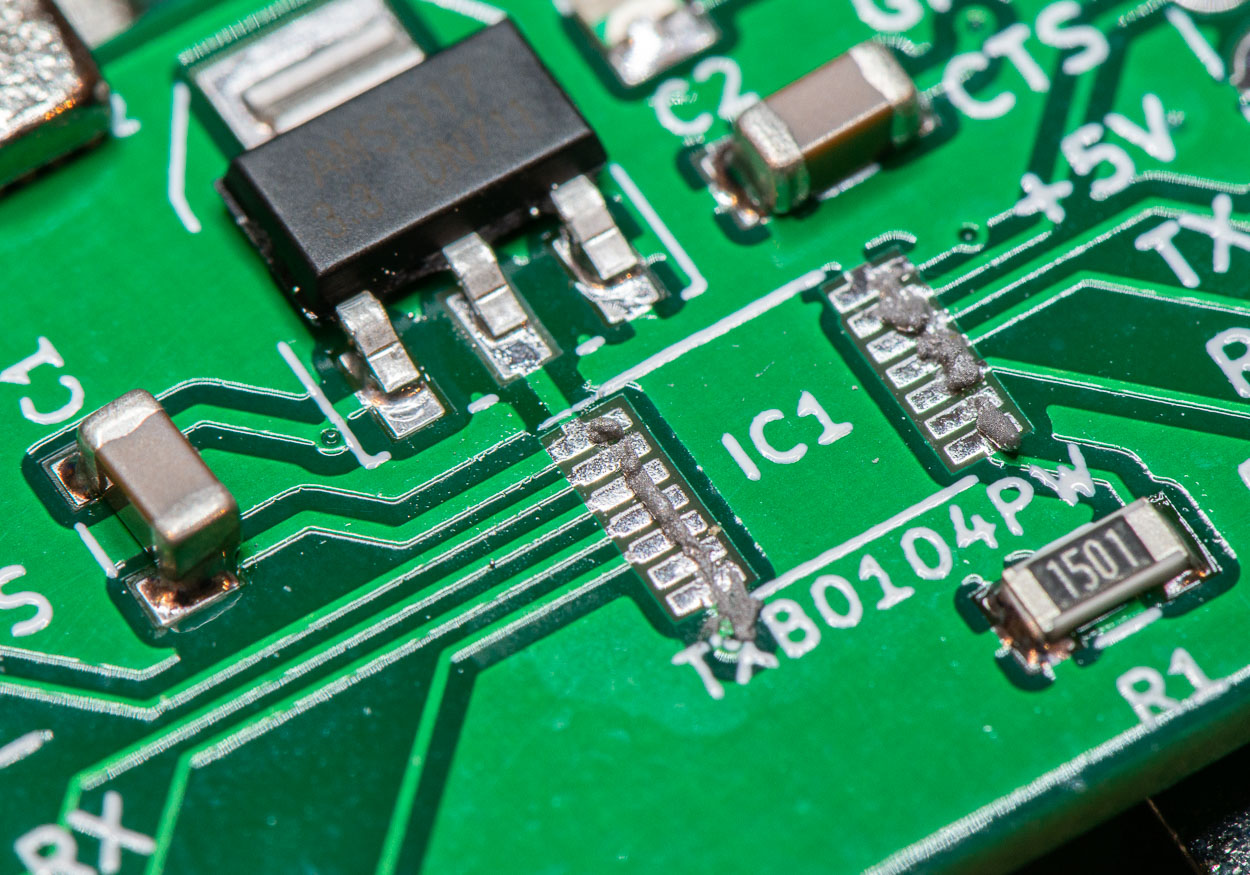Electronic components are shrinking to smaller pitches, requiring precision soldering techniques. Fine pitch surface-mount devices (SMDs) allow more compact PCBs but present soldering challenges. With careful process design and operator skill, even micro-scale pitches can be reliably soldered.
Understanding Fine Pitch
Pitches under 1mm, sometimes down to 0.3mm, qualify as “fine”. At these tiny gaps between leads, solder bridges become likely and inspecting joint quality is difficult. But emerging techniques enable reliable soldering down to 0.4mm pitch and even below.
According to Paul Austen, Senior Applications Engineer at Electro Scientific Industries, “Carefully designed soldering processes allow handling the latest fine-pitch component packages, enabling denser PCB assemblies.”
Using Appropriate Solder
Solder choice impacts fine pitch success. Solder paste should match pad dimensions precisely. Type 3 and 4 powders provide optimal finesse. Flux cores promote wetting. And composition is tuned for lower process temperatures.
Lead-free solders like SAC 305 avoid challenging lead contamination while requiring lower peak temperatures. This reduces risks of thermal damage. Precise volume deposition controls limit solder quantity.
Matt Stevenson, Global Process Expert at Indium Corporation noted, “Optimizing solder materials and volumes prevents shorts while providing reliable interconnections.”
Utilizing Stencils
Fine pitch demands solder stencils etched with small precise openings matching pad designs. Laser cutting and electroforming make cavities with fine 5-10 mil walls. Stencil thickness, typically 4-6 mils, ensures paste release. And proper storage avoids clogging.
Nanocoatings like oleophobics reduce solder balls for precise deposition. Regular stencil cleaning and inspection checks opening quality. And small area ratio designs limit bridging.
“High-quality stencils are essential for printing minute solder deposits,” emphasized Lee Levine, President of PhotoStencil. “Careful stencil maintenance sustains reliability at fine pitch.”
Employing Precision Printing
With tight stencil and paste control, fine pitch paste printing becomes viable. Automatic optical inspection verifies print quality. Fiducials for accuracy should be within 2 mm. And small bottom-side stencil wipe angles prevent smearing.
Printing machines keep stencils parallel using dynamic referencing. Slow, steady separation lowers print forces. And regular re-registration avoids offsets over long runs. Precision results in consistent, high-quality solder depots.
As Brian O’Neil, Director of Technology at ASM NEXX, described, “Advances in precise stencil design combined with tightly controlled printing processes enables accurate, repeatable solder deposition down to 0.30mm pitch and below.”
Optimizing Reflow
Reflow profiles must be tailored for fine pitch assemblies. Low peak temperatures avoid damaging sensitive components or substrates during reflow. Short times above liquidus also reduce bridging risks.
Precise thermal uniformity ensures even heating without hotspots. Profiles may employ ramp-soak periods to reduce solder balling and slumping. Nitrogen atmospheres further prevent oxidation defects.
“We throttle back reflow temperatures and and shorten times above liquidus when soldering fine-pitch assemblies,” explained Fabio Friere, SMT Manager at Embraer. “This reduces risks of bridging.”
Leveraging Advanced Placement
Automated pick-and-place systems leverage advanced vision and motion control to precisely assemble fine-pitch components. Feeders position devices consistently. Split optics and laser height-sensing enhance precision. And specialized nozzles handle tiny packages.
High-accuracy placements within 50 microns are routine for the latest assembly systems. This precision significantly reduces assembly defects and rework. And automation provides the repeatability needed for large fine-pitch production runs.
Matt Girardi, Director of Smart Factory Solutions at Aegis, commented “Modern placement systems provide the precision required for micro-scale 0402 passives, 0.4mm pitch BGAs, and other cutting-edge packages.”
Inspecting Thoroughly
Rigorous inspection validates quality as pitches shrink. Powerful optics and x-ray examine fine details. Automated optical inspection quickly identifies missing or misaligned solder. And solder joints are inspected for acceptable fillet shapes without bridging.
2D x-ray reliably detects hidden soldering defects like insufficient wetting. Troubleshooting tools like scanning acoustic microscopy uncover subsurface voids. And integrated process data analytics track fine pitch process health.
According to Elise Furlan, Vice President at Nordson MATRIX, “Advanced automated inspection is critical for process control and defect prevention as solder pitches decrease.”
Developing Operator Skills
Even with automation, skilled operators are indispensible for fine pitch soldering excellence. Extensive hands-on training develops the specialized skills needed. Operators master setup, adjustment, and maintenance for each process step.
Regular practice builds dexterity and muscle memory for critical tasks like stencil cleaning and touch-up. And human visual inspection adds smart, adaptive process oversight. Developing these operator capabilities ensures consistent fine-pitch process execution.
As Tony Lentz, Senior Field Service Engineer at Juki Automation Systems, explained, “Well-trained operators make all the difference. Their expertise fine-tunes our automated lines and catches rare defects.”
In summary, a holistic approach combining precision equipment, optimized materials, advanced inspection, and operator skill makes modern fine-pitch soldering possible. These best practices will continue advancing as component packages shrink further.
















